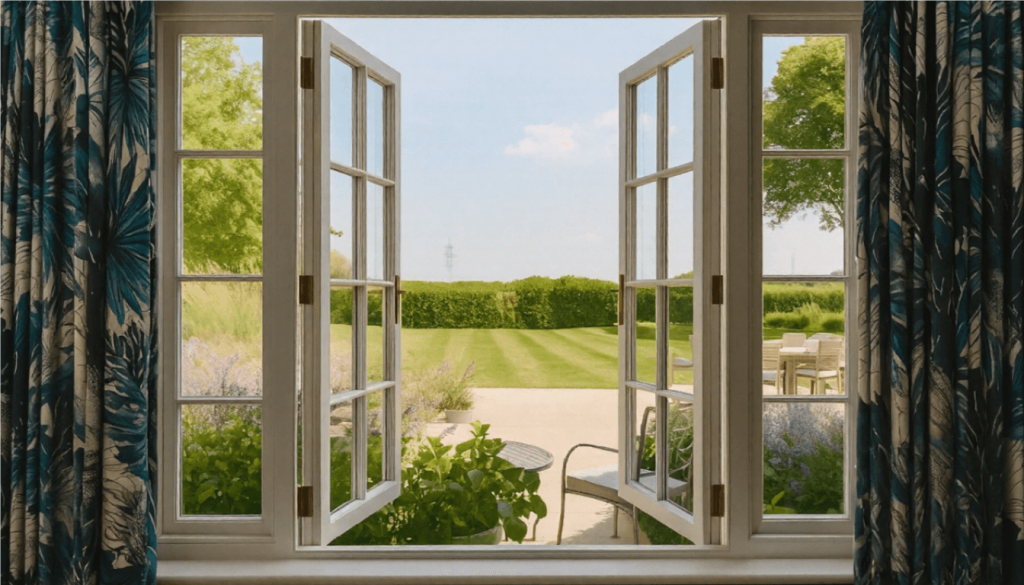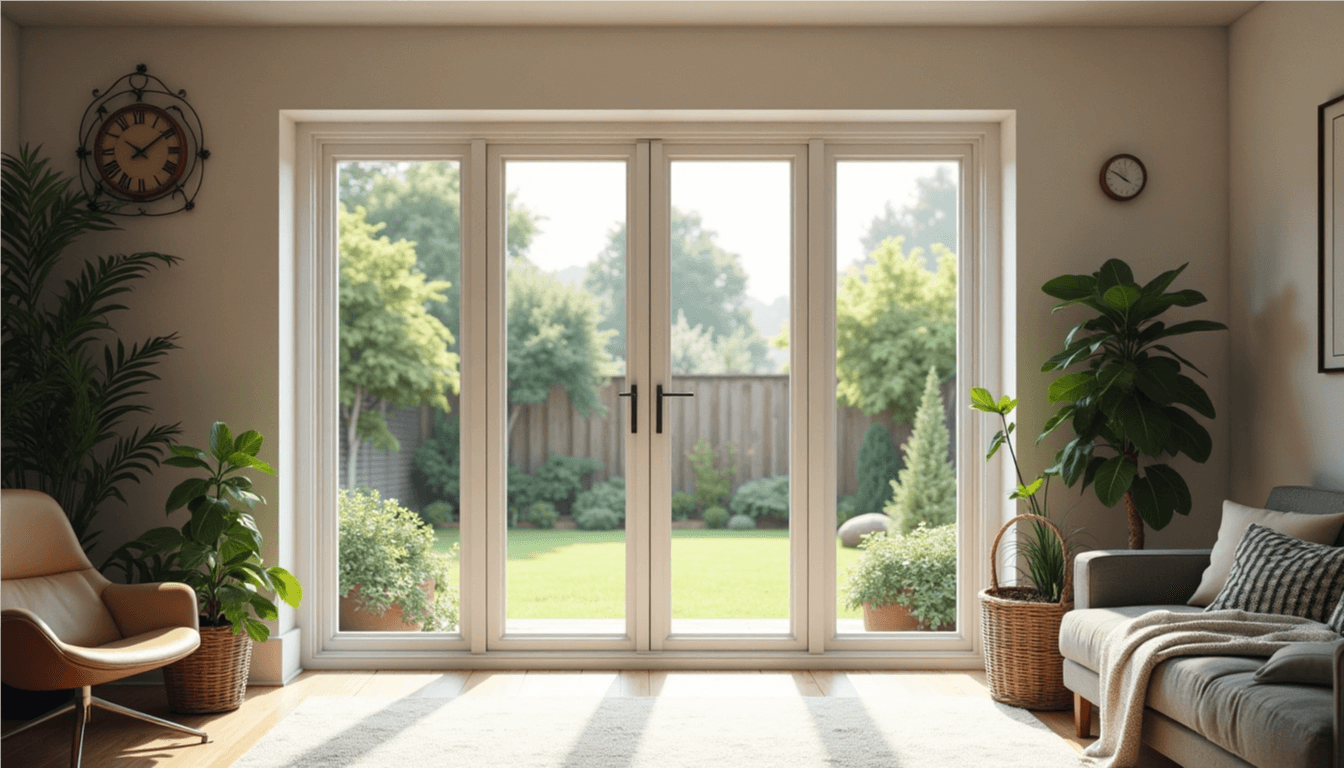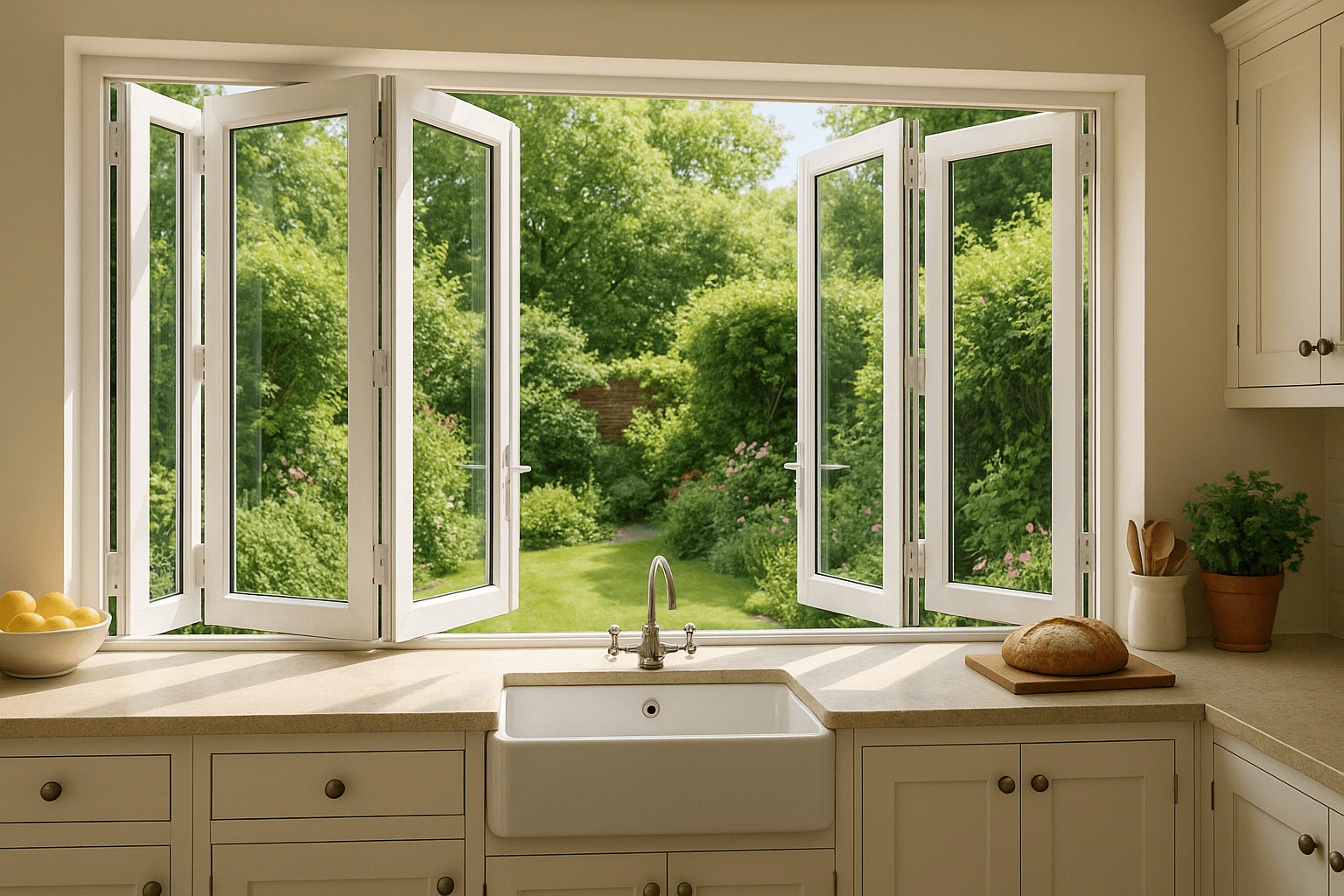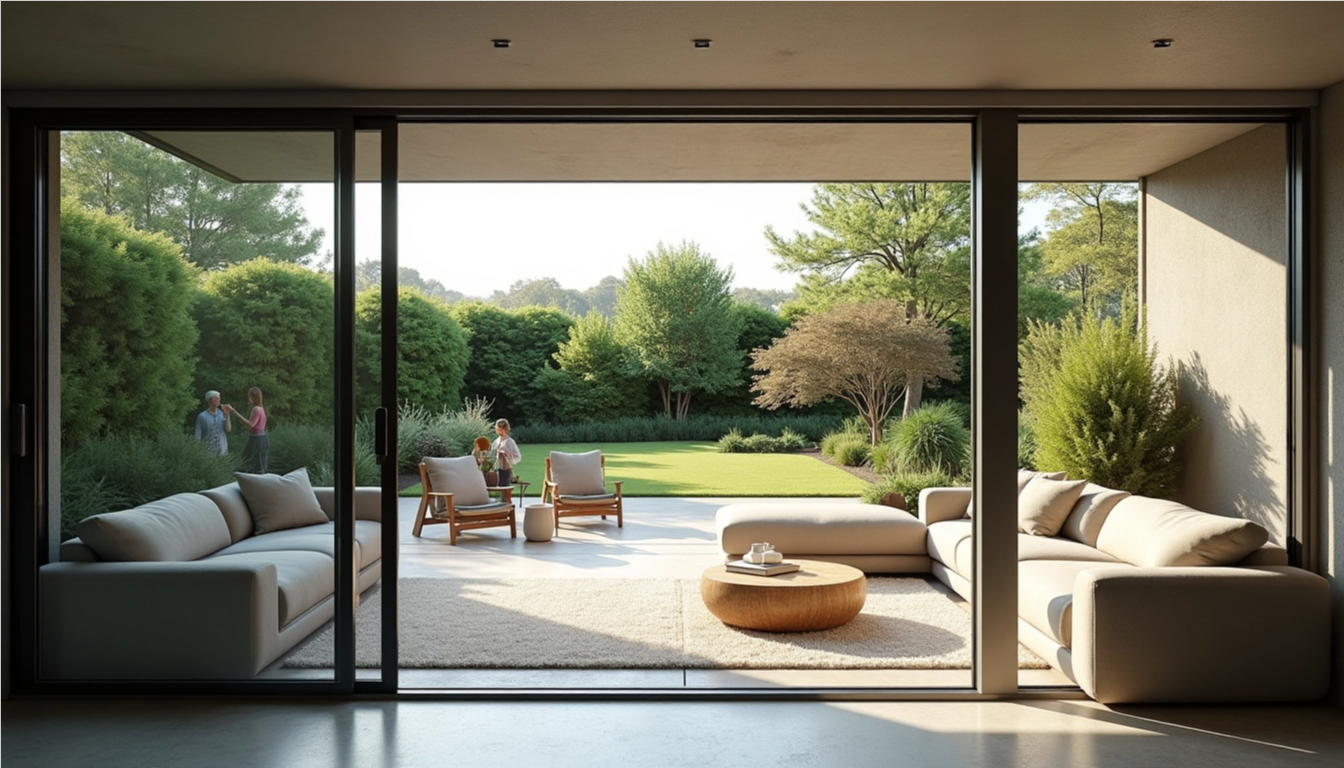From Home To Garden: How French Windows Can Seamlessly Extend Your Interior Ambience

In modern interior design, creating a sense of openness and continuity between your living space and the outdoors has become a priority for many homeowners. One of the most effective ways to achieve this is by installing French windows.
Known for their expansive glass panes and elegant frames, French windows don’t just enhance the aesthetic of a room—they offer a direct link to your garden, blending the indoors with nature in a way that feels both inviting and refined.
This article will explore how French windows can create a smooth transition between your interior décor and garden, making the entire space feel more expansive and connected.
Harmonising Interior Décor With Garden Elements
When it comes to making the most of French windows, it’s essential to consider how your interior style can align with the natural environment outside.
Colour Harmony: The colour choices you use in your home can play a crucial role in connecting the indoor and outdoor spaces. Instead of treating your garden and home as separate entities, use colour to unify them.
Soft tones like light greens, muted blues, and beige create a smooth, natural flow. These colours evoke the hues found in gardens and natural landscapes, allowing your interiors to feel like an extension of your outdoor space.
If your garden is full of vibrant blooms, you may want to echo these rich colours indoors to create a dynamic energy between the two areas. For instance, accents of deep reds or purples in textiles and furniture can resonate with the flowers and plants just beyond the windows.
Texture And Material Choices: Integrating textures that are found outdoors, such as stone, wood, or even metal, can help establish a seamless connection between your home and garden.
If your garden features a stone path or wooden decking, consider bringing similar materials inside with stone countertops or wooden floors. The idea is to use textures that feel organic and familiar, creating a sense of continuity from one space to the other.
Linen or cotton fabrics for upholstery and curtains also help mimic the natural environment, offering a softer feel that complements the outside airiness.
Incorporating French Windows Into Different Home Styles
French windows are adaptable to a variety of interior design styles. Whether your home is contemporary, rustic, or traditional, French windows can be tailored to suit your space.
Contemporary Homes: In a modern or minimalist setting, French windows act as an elegant feature that introduces natural light and provides an unobstructed view of the garden. Opt for clean, simple window frames that allow the outdoor elements to take centre stage. Inside, choose sleek furniture with sharp lines, and use materials like glass, metal, or light woods to keep the look fresh and uncluttered.
The goal here is to use the windows to create a calm, expansive feeling by focusing on natural light and unobstructed sightlines.
Rustic And Cottage Homes: For homes with a rustic or cottage-inspired aesthetic, French windows add a layer of charm and warmth. Wooden frames with a more textured, distressed finish work well with the organic materials typically found in these homes. Consider adding accessories like a woven rug or a wooden dining table to reinforce the natural feel.
This style thrives on a cosy, lived-in atmosphere, and French windows, with their classic design, bring a touch of elegance to the warmth of rustic spaces.
Traditional Homes: In more traditional settings, French windows offer a formal yet welcoming way to connect the indoor and outdoor spaces. Tall, intricate frames with classic details like mullions can create a striking focal point. Inside, choose rich, luxurious fabrics for upholstery and curtains, and add elegant furniture to maintain the traditional look.
The balance between formal interior elements and the natural beauty outside creates a well-rounded, refined atmosphere.
Maximising The Visual Impact Of Large Glass Panes
One of the defining features of French windows is their large glass panes, which provide an uninterrupted view of the garden. These expansive windows do more than just let in light—they also create a visual extension of your living space, while the uninterrupted sightline encourages a feeling of openness, allowing you to enjoy the changing seasons and the beauty of your outdoor space, all from the comfort of your home.
These large glass windows are particularly effective in small homes or apartments, where they can make a room feel much larger and more connected to the world outside. The influx of natural light enhances the sense of airiness and spaciousness, even in smaller rooms.
And in larger homes, the glass panes serve to frame the garden as if it were a natural extension of the room itself, blending the interior and exterior in a way that’s both functional and aesthetically pleasing.
Reflecting Garden Features Inside Your Home
To create a truly seamless connection between your indoor space and garden, it’s important to carry certain elements from the garden into the home. This doesn’t mean duplicating every detail, but rather reflecting the same natural themes and features found outside.
Indoor Plants: The easiest way to establish continuity is by bringing greenery indoors. Whether it’s large indoor trees, hanging plants, or a few simple potted plants, these living elements echo the plants outside the window.
Consider choosing varieties that complement your garden, such as ferns, ivy, or flowering plants, and place them near your French windows to blur the line between indoors and outdoors.
Furniture And Textiles: Selecting furniture that feels grounded in nature can also reinforce the connection. Wooden furniture, rattan chairs, or woven baskets work well indoors, mimicking the materials found in a garden.
For textiles, look for botanical patterns, floral prints, or fabrics that mirror the textures of your outdoor environment, like linen or cotton. This helps create a visual rhythm that connects the garden and the home in an organic, cohesive way.
Tips For Seamless Integration Between Interior And Garden
Achieving a smooth, natural flow from the indoors to the outdoors doesn’t happen by chance. It requires careful planning and attention to detail. Here are a few tips to help you create a seamless transition between your home and garden:
Consistent Materials: Use similar materials both inside and outside. If your garden has a stone pathway, bring that texture inside with stone floors or countertops. Similarly, if you have wooden decking or fencing, consider using wood inside to keep the aesthetic cohesive.
Strategic Furniture Placement: Position furniture near your French windows to create a clear visual connection between the indoor and outdoor spaces. Whether it’s a cosy armchair by the window or a dining table that opens out onto the garden, placing furniture in such a way allows the two areas to feel like one continuous space.
Linking Greenery: Introduce plants that are common in both your garden and indoor spaces. This subtle yet effective approach helps the spaces feel connected, with the green foliage acting as a visual bridge between the two environments.
A Window To The World
French windows are more than just a design feature—they are a way to create a continuous connection between your indoor living space and the garden beyond. By thoughtfully considering colour, materials, and furniture, and by reflecting the natural elements found outside, you can create a space that feels open, expansive, and unified.
With their ability to maximise light, frame views, and invite nature inside, French windows offer an elegant and practical solution for those who want to make their homes feel more connected to the natural world.
Categories: Uncategorised



